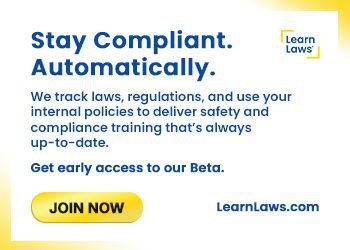The Department of Education has issued final regulations amending the Public Service Loan Forgiveness (PSLF) program under the William D. Ford Federal Direct Loan Program. Effective July 1, 2026, these rules exclude employers engaged in specified illegal activities that constitute a substantial illegal purpose, preventing PSLF benefits from supporting organizations that undermine public good. Announced in the Federal Register on October 31, 2025, the changes respond to President Trump's Executive Order 14235, directing revisions to PSLF criteria to align with national security and American values. This development addresses longstanding concerns about program integrity, ensuring taxpayer funds reward only lawful public service while providing borrowers with clear guidelines and protections for prior qualifying employment.
Background and Statutory Authority
The PSLF program, established by the College Cost Reduction and Access Act of 2007 (Public Law 110-84), allows Direct Loan borrowers to receive forgiveness after 120 qualifying payments while employed full-time by a qualifying employer, as defined in 20 U.S.C. 1087e(m). Qualifying employers include government entities, tax-exempt nonprofits under Section 501(c)(3) of the Internal Revenue Code, and certain other nonprofits providing public services.
Since its inception, the program has undergone multiple amendments, including expansions in 2020 to include religious organizations following Trinity Lutheran Church of Columbia, Inc. v. Comer (582 U.S. 449, 2017) and clarifications in 2022 defining non-governmental public services. However, these rules did not address employers engaging in illegal activities. The current regulations draw from the IRS's illegality doctrine, as seen in cases like Bob Jones University v. United States (461 U.S. 574, 1983) and Mysteryboy Inc. v. Commissioner (99 T.C.M. 1057, 2010), which deny tax-exempt status to organizations with substantial illegal purposes.
President Trump's Executive Order 14235 (March 7, 2025) instructed the Department to revise PSLF to prevent subsidizing harmful activities. The final rule, developed through negotiated rulemaking in June-July 2025 and public comments on the August 18, 2025, NPRM, incorporates these directives while adhering to the Higher Education Act's authority for the Secretary to regulate Title IV programs.
Key Provisions of the Final Regulations
The regulations introduce definitions for terms like 'substantial illegal purpose,' encompassing activities such as aiding immigration violations (8 U.S.C. 1325), supporting terrorism (18 U.S.C. 2331), or engaging in chemical/surgical mutilation of children in violation of law. A qualifying employer is redefined to exclude those with such purposes, determined by the Secretary via a preponderance of evidence after notice and opportunity to respond (34 CFR 685.219(h)).
Borrowers receive full credit for payments made before an employer's ineligibility determination, but post-determination months do not count (34 CFR 685.219(c)(4)). Employers can regain eligibility after 10 years or via an approved corrective action plan (34 CFR 685.219(j)). The Department must notify borrowers of status changes and update a public qualifying employer list (34 CFR 685.219(e) and (k)).
These provisions apply prospectively to activities on or after July 1, 2026, avoiding retroactive penalties. Evidence includes court judgments, guilty pleas, or settlements admitting illegal conduct, ensuring decisions are fact-based.
Legal and Political Context
The rule aligns with precedents like Church of Scientology of California v. Commissioner (83 T.C. 381, 1984), where tax-exempt status was revoked for criminal activity. Political forces, including President Trump's executive orders on immigration (e.g., Executive Order 14187, January 28, 2025) and public service reform, shaped the enumerated illegal activities.
Perspectives vary: supporters view it as essential for accountability, preventing misuse of funds, as noted in the Federal Register's emphasis on protecting 'hardworking taxpayers.' Critics, including public comments, argued it risks politicization or burdening lawful nonprofits, though the Department countered that determinations are evidence-based and viewpoint-neutral, respecting First Amendment protections.
Short-Term and Long-Term Implications
In the short term, the rule may disrupt a small number of borrowers, estimated at fewer than 10 employers annually affected, per the Regulatory Impact Analysis. Borrowers at ineligible employers must seek new qualifying positions to continue progress, potentially delaying forgiveness. Employers face compliance reviews, with costs estimated at $1.5-3 million initially for the Department, plus minor burdens for organizations.
Long-term, the regulations are projected to save $1.616 billion over 10 years by reducing improper discharges, enhancing fiscal stewardship. They may deter illegal activities among nonprofits, fostering a more ethical public service sector. However, some sectors like healthcare or legal aid could see recruitment challenges if organizations fear disqualification, though the rule's safeguards aim to minimize this.
Different stakeholders offer contrasting views: borrowers and unions emphasize risks to public service retention, while fiscal conservatives praise the focus on lawful activities. The Department maintains the changes align with PSLF's intent without endorsing any perspective.
The Department of Education's final PSLF regulations mark a pivotal step toward program integrity, balancing borrower protections with taxpayer accountability. Key takeaways include prospective application to preserve earned credits, evidence-based determinations to prevent abuse, and pathways for employer reinstatement. Moving forward, potential challenges include administrative implementation and legal challenges under the Administrative Procedure Act. Ongoing debates may center on enforcement consistency across administrations, with possible trajectories including judicial affirmation or congressional refinements to address edge cases. The rule underscores the evolving tension between program accessibility and fiscal responsibility in federal student aid.
